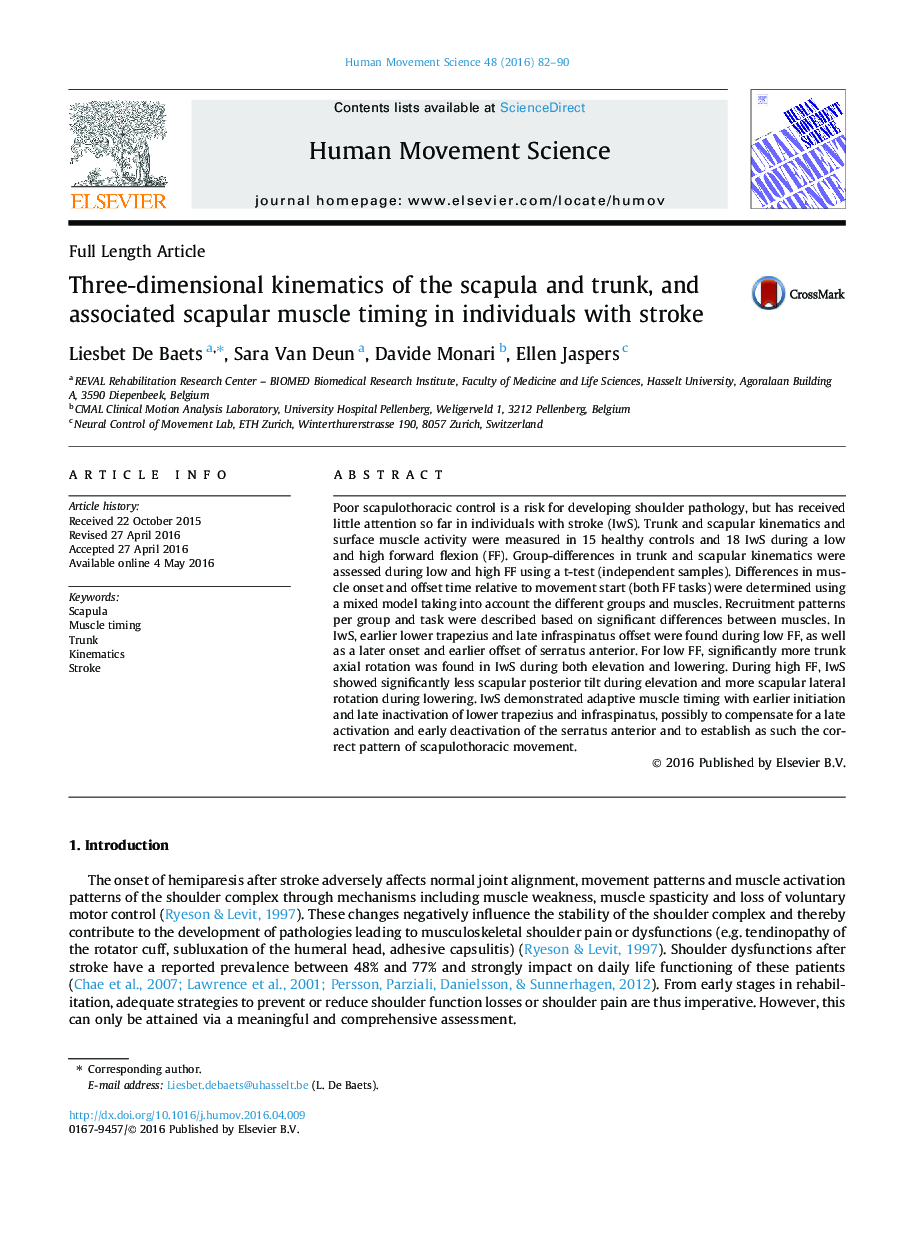| کد مقاله | کد نشریه | سال انتشار | مقاله انگلیسی | نسخه تمام متن |
|---|---|---|---|---|
| 928188 | 1474217 | 2016 | 9 صفحه PDF | دانلود رایگان |
• Stroke patients show an altered muscle timing with earlier lower trapezius initiation.
• Stroke patients use prolonged activation of infraspinatus.
• During arm elevation, stroke patients show less scapular posterior tilt.
• Stroke patients show more lateral rotation during arm lowering.
• Serratus anterior shows late activity and early inactivity in stroke patients.
Poor scapulothoracic control is a risk for developing shoulder pathology, but has received little attention so far in individuals with stroke (IwS). Trunk and scapular kinematics and surface muscle activity were measured in 15 healthy controls and 18 IwS during a low and high forward flexion (FF). Group-differences in trunk and scapular kinematics were assessed during low and high FF using a t-test (independent samples). Differences in muscle onset and offset time relative to movement start (both FF tasks) were determined using a mixed model taking into account the different groups and muscles. Recruitment patterns per group and task were described based on significant differences between muscles. In IwS, earlier lower trapezius and late infraspinatus offset were found during low FF, as well as a later onset and earlier offset of serratus anterior. For low FF, significantly more trunk axial rotation was found in IwS during both elevation and lowering. During high FF, IwS showed significantly less scapular posterior tilt during elevation and more scapular lateral rotation during lowering. IwS demonstrated adaptive muscle timing with earlier initiation and late inactivation of lower trapezius and infraspinatus, possibly to compensate for a late activation and early deactivation of the serratus anterior and to establish as such the correct pattern of scapulothoracic movement.
Journal: Human Movement Science - Volume 48, August 2016, Pages 82–90
